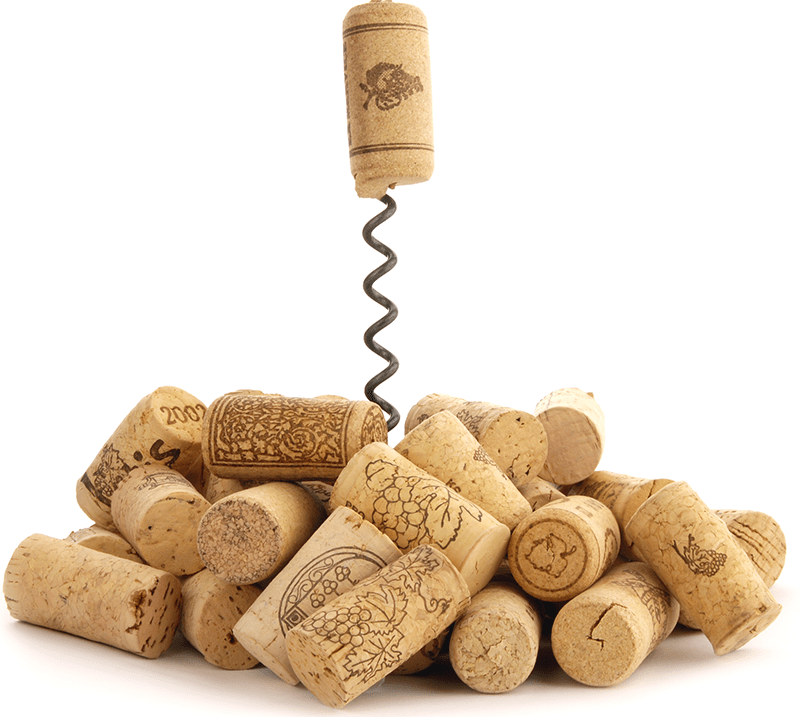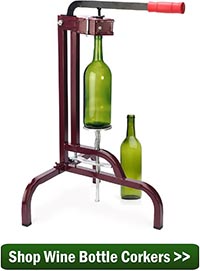 So, your homemade wine is just about ready and you’re preparing to bottle! All the hard work creating your masterpiece is nearly complete and transitions into a more passive process of waiting for the wine to be ready to be shared and enjoyed!
So, your homemade wine is just about ready and you’re preparing to bottle! All the hard work creating your masterpiece is nearly complete and transitions into a more passive process of waiting for the wine to be ready to be shared and enjoyed!
But you must be careful and not get too lax about things, as the bottling process is just as important as every step up until now. Buying corks for your wine bottles is a critical step, as well. Not all corks are the same and the corks you buy must ensure the proper fit for the aging at hand.
Selecting the right wine cork can be an overwhelming process. There are countless sizes, and source materials used. How are you supposed to buy corks when there are so many types from which to choose? It helps to have a elementary understanding of the basic differences between the different wine corks. And, this is were we will start…
Your first decision when buying corks for wine bottles is whether or not you want to use synthetic corks or natural corks. The difference between the two is that natural cork allows more oxygen into the wine than synthetic. This is preferable if you want a wine to age more quickly. The downside, however, is that the wine will not keep as long. In other words, the wine will have a short life-cycle. Instead of being fresh in the bottle for 5 or 10 years, it may be necessary to consume the wine within 2 or 3. We have different natural wine corks with different densities for this reason.
Conversely, synthetic corks are great for aging and keeping wines for longer periods of time. The amount of oxygen that is allowed to pass a synthetic cork is very minimal. They are as oxygen restrictive as our best quality natural corks. So as you can start to see, when buying corks for your wine bottles, natural vs. synthetic become an important decision.
Now, you need to consider the size of the corks. You’ll be happy to know that all cork-finish wine bottles have the same opening. This is regardless if they are 375 mL or 750 mL in size. The bottle opening is 3/4 inch. So, this is not an issue. But, natural corks are sold in different diameters:
- Size #7 Corks (13/16 inch)
- Size #8 Corks (7/8 inch)
- Size #9 Corks (15/16 inch)
- Size #10 Corks (1 inch)
Which of these diameters you choose depend on two thing: 1) Whether or not you have a wine bottle corker to insert the corks, and 2) How quickly you would like the wine to age.
If you do not have a wine bottle corker, then you will be limited to size #7 corks. Corks larger than this require that they be pressed into the wine bottle. They can not be put in by hand. Another option would be to use T-Corks instead of straight corks. These can be put in by hand as well.
If you would like the wine to age as quick as possible, then you would want to consider size #7 corks. If you would like the wine to keep as long as possible then #10’s may be an options. However, I would recommend staying away from these both these options when buying corks for your wine bottles. Remember, fast aging equals short keeping time. And the size #10’s are so hard to put in, you will need a professional floor-model corker to put them in. They are also hard to take out.
Most wine makers will either use size #8 or #9. This provide a nice balance of aging and shelf-life. It is also important to not that the standard size for the commercial wine industry is the size #9. All synthetic corks are size #9.
Buying corks for wine bottles doesn’t have to be stressful, and knowing what source material you’d like and the type of wine bottle you’ll be using will help you tremendously in narrowing down which you should ultimately purchase. You may want to take a look at another blog post, “Getting The Wine In The Bottle…“. It carries this subject a little further.
—–
Ed Kraus is a 3rd generation home brewer/winemaker and has been an owner of E. C. Kraus since 1999. He has been helping individuals make better wine and beer for over 25 years.

Hi
The bottle opening is 3/4 inch.
This statement may be true ( or not) for USA bottles but of all the bottles that I have seen it is not true. I have seen previously corked bottles, that even a #7 cork has a tough time going into it. ( and this is not ‘Champagne’ style bottles.)
The last time I bottled my wine I was in a hurry to get done an didnt let my corks sit in warm water long enough . Now I have some bottles that seeped a bit after even3 weeks of being Upright then put on shelf laying down, Not alot of dripping but enough to notice. Synthetic corks were used. Might be a good idea to remind people like me to dont be in a hurry . An also what length corks should be used? Thank you
Leo, corks are normally 1 1/2 to 1 3/4 inches long.
Is it necessary to soak the corks? I usually use the corks straight out of the sealed bag or if the bag was opened i make a sort of humidor with a tupperware bowl and a open cup of PMBS solution and let it sit for a while. Never had a problem.
Joe, the reason that you want to soak the corks is not just to make them more pliable for insertion but also to sanitize the corks before use. You can either soak them in at sulfite solution or steam them. The article posted below will provide additional information.
Preparing Corks
http://blog.eckraus.com/preparing-your-corks-when-bottling-homemade-wine